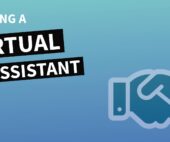Search Engine Optimization (SEO) is one of the most important digital marketing strategies today. Whether you’re a business owner, blogger, or content creator, SEO helps you get your website noticed by search engines like Google, which can drive more traffic to your site. In this blog post, we’ll break down the basics of SEO, how it works, and simple steps you can take to get started
What is SEO?
SEO, or Search Engine Optimization, is the process of optimizing your website so that it ranks higher on search engines like Google. When users search for something online, search engines display a list of websites that are relevant to their query. The goal of SEO is to help your website rank higher on that list so more people can find your content.
Why is SEO Important?
Increased Visibility: The higher your site ranks on search engines, the more likely people will click on your link.
Organic Traffic: SEO helps bring free, organic traffic to your website without needing to pay for ads.
Credibility and Trust: High-ranking websites are seen as more credible by users.
Long-Term Results: A good SEO strategy can provide long-term traffic to your website over time.
How Search Engines Work
Before diving into SEO techniques, it’s important to understand how search engines work. Search engines like Google use algorithms to “crawl” websites and rank them based on relevance and quality. The main factors they consider include:
Keywords: The search terms people use to find information.
Content: The quality and relevance of the information on your site.
Links: Both internal and external links that connect your site to others.
User Experience: How easy your site is to navigate, including page load speed and mobile-friendliness.
Key SEO Elements You Need to Know
- Keyword Research
Keywords are the words and phrases people type into search engines when looking for something. For SEO, it’s crucial to identify relevant keywords that people might use to find your website. There are tools like Google Keyword Planner and Ubersuggest that help you find keywords with good search volume and low competition.
Tip: Focus on long-tail keywords (e.g., “how to start a blog”) as they have less competition and can be easier to rank for.
- On-Page SEO
On-page SEO involves optimizing individual pages on your website for search engines. Here are some essential elements to focus on:
Title Tags: Make sure each page has a unique, keyword-rich title tag that tells search engines what the page is about.
Meta Descriptions: Write compelling meta descriptions (150-160 characters) that include your target keywords.
Header Tags (H1, H2, H3): Organize your content with headers. Use your main keyword in the H1 tag and supporting keywords in H2/H3 tags.
Image Alt Text: Use descriptive alt text for images, which helps search engines understand what your images are about.
- Content Creation
Content is king in SEO. Search engines prioritize high-quality, relevant content that answers users’ queries. When creating content, aim to:
Write informative and engaging articles that provide value to your readers.
Include your target keywords naturally throughout the content.
Use a variety of content types, like blog posts, videos, and infographics.
Tip: Regularly update your blog with fresh content to keep your site relevant.
- Technical SEO
Technical SEO involves optimizing the backend of your website to improve its crawlability by search engines. This includes:
Site Speed: Make sure your site loads quickly. A slow website can hurt your rankings.
Mobile-Friendliness: Ensure your site is mobile-responsive, as search engines favor websites that are easy to view on mobile devices.
XML Sitemap: Create an XML sitemap to help search engines navigate and index your site’s content.
- Link Building
Link building is the process of getting other websites to link back to your content. These backlinks act as votes of confidence in your site, showing search engines that your content is valuable.
Internal Links: Link to other pages on your own website to create a clear navigation structure.
External Links: Earn backlinks from reputable websites by creating high-quality content that others want to reference.
Tip: Guest posting and reaching out to industry influencers can help you build a strong backlink profile.
- User Experience (UX)
Search engines also consider how user-friendly your website is. Focus on creating a website that is easy to navigate and provides a good experience for visitors:
Page Load Speed: Optimize your images, use a fast web hosting service, and minimize code to improve your site’s speed.
Navigation: Make sure your site’s layout is intuitive, with easy-to-use menus and clear calls to action.
Mobile Optimization: Since many people use mobile devices to search, having a mobile-friendly site is crucial.
Tracking Your SEO Progress
It’s important to track and analyze your SEO efforts to see what’s working and what needs improvement. Use tools like Google Analytics and Google Search Console to monitor your traffic, keyword rankings, and other key metrics.
Metrics to Watch:
Organic Traffic: How many visitors are coming to your site from search engines?
Bounce Rate: How many visitors leave your site after viewing only one page?
Keyword Rankings: Are your target keywords moving up in the search engine rankings?
Conclusion
SEO can seem overwhelming at first, but by focusing on the key elements—keyword research, on-page optimization, technical SEO, content creation, link building, and user experience—you can start building a solid foundation for your website. The more you learn and apply SEO best practices, the more you’ll see your site climb the search engine rankings, bringing in more organic traffic over time.
Call to Action: Ready to take your SEO efforts to the next level? Start implementing these tips today and watch your website’s visibility grow! For more SEO advice and updates, subscribe to our newsletter.






